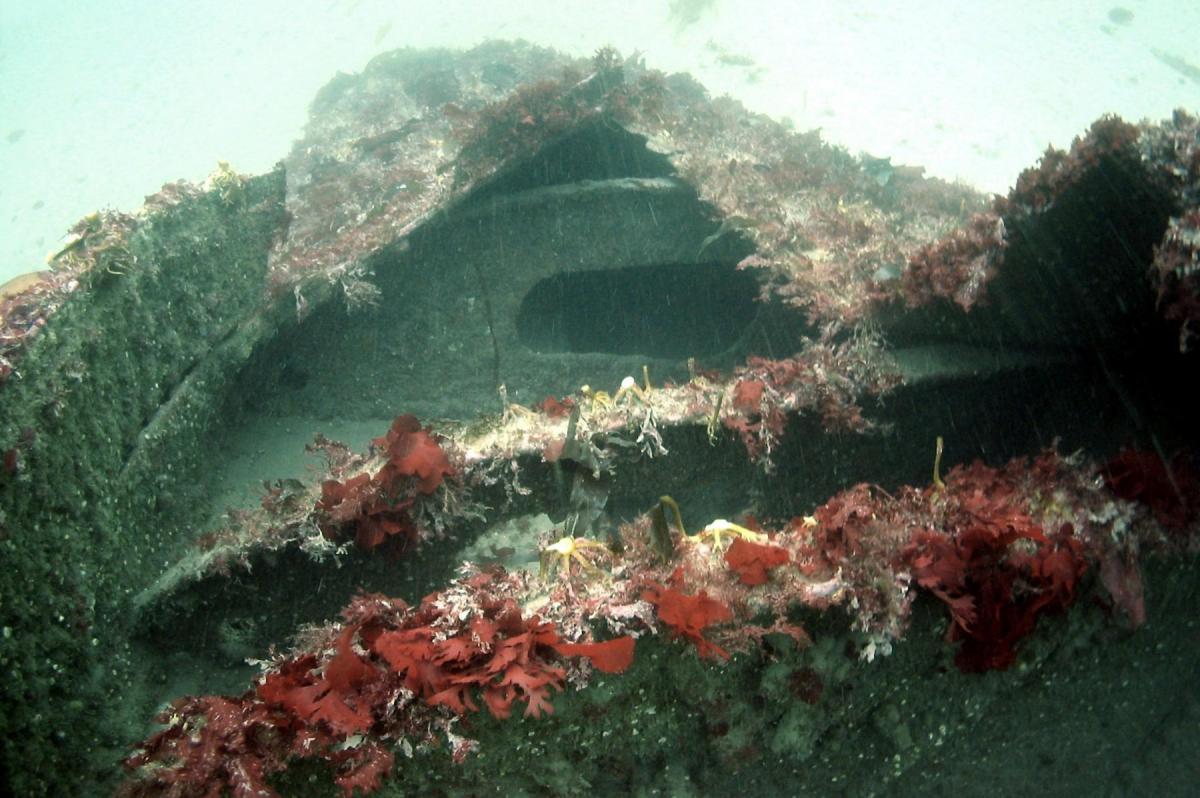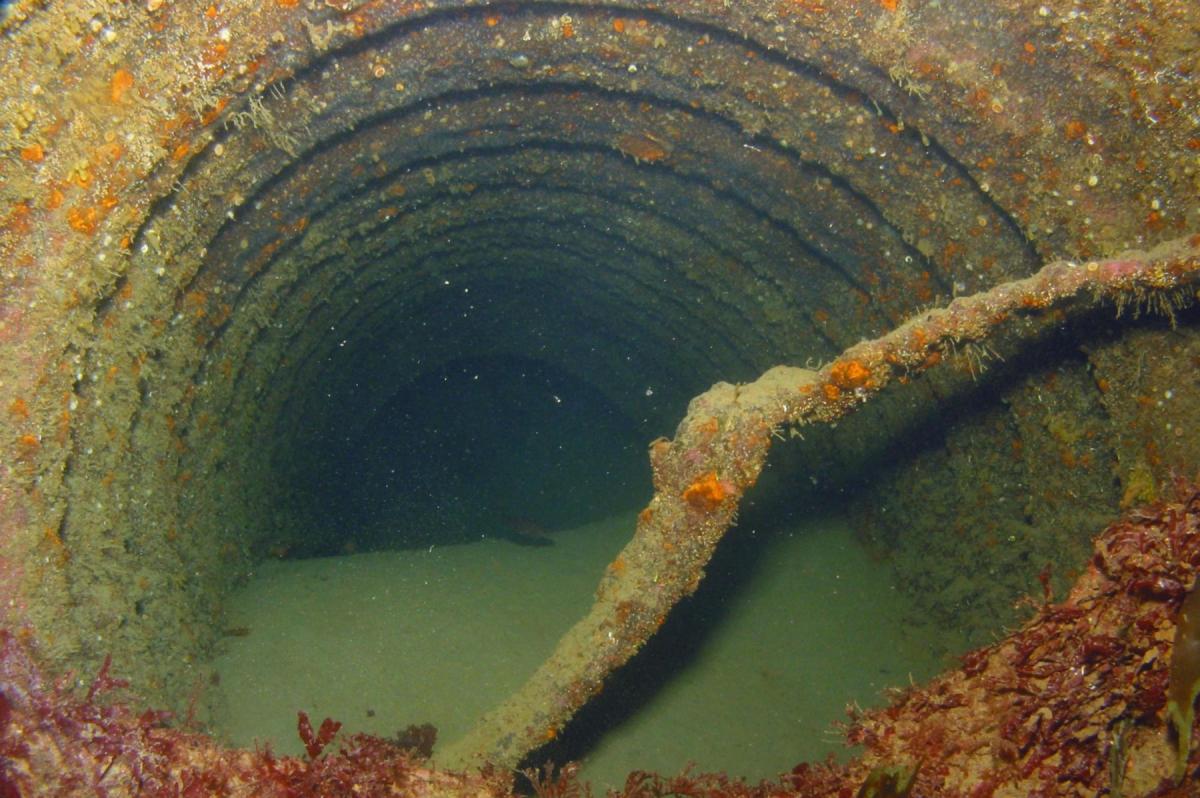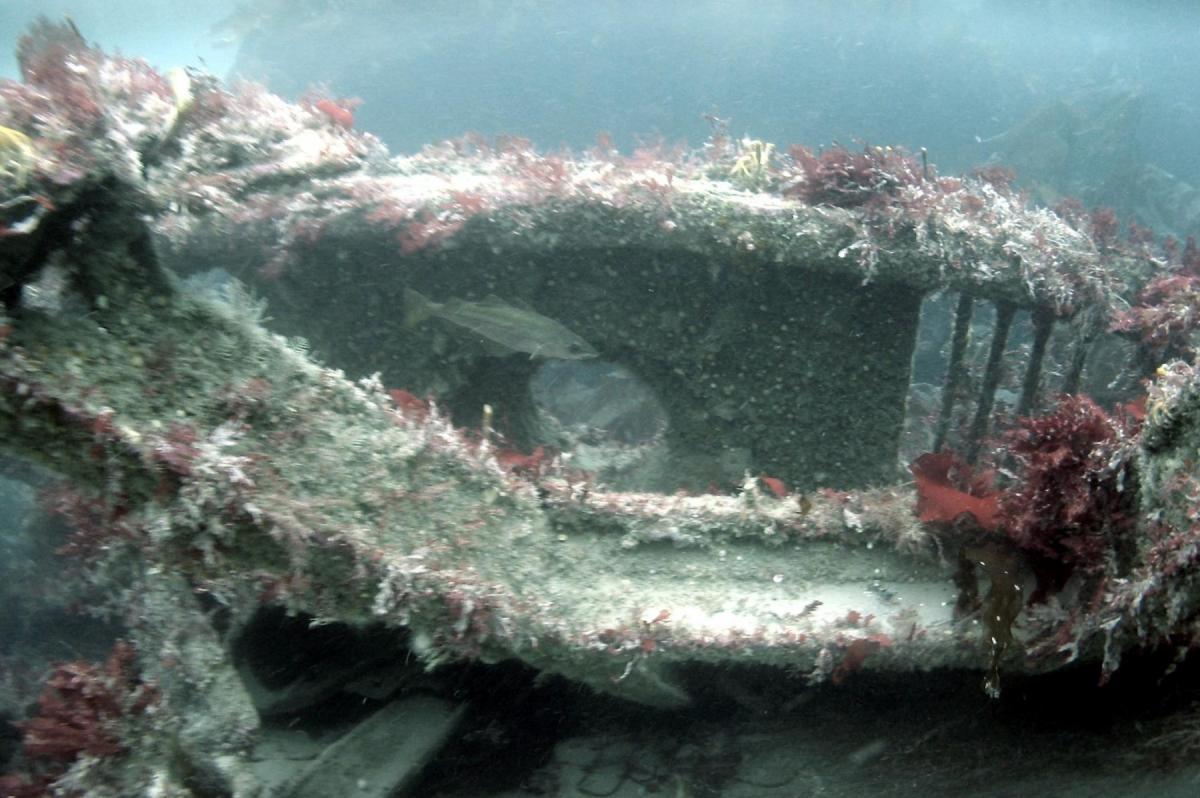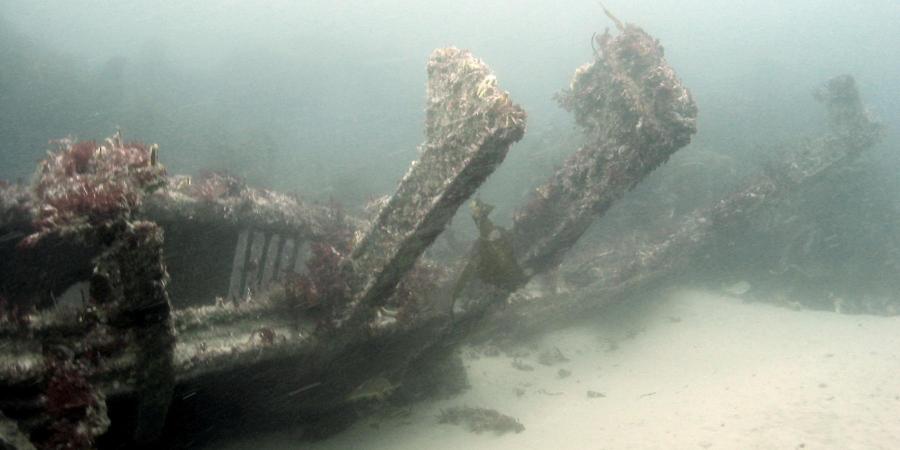55.28669102908, -6.2075141993381
HMS Drake was built at HM Dockyard at Pembroke, between 1899 and 1902. HMS Drake was a Drake Class armoured cruiser, based on the Cressy Class cruisers. Cruisers were a class of warship developed in the 19th century designed for scouting, commerce warfare and showing the flag, roles previously taken by frigates, corvettes and sloops. Although cruisers could be powerful ships (HMS Drake was a 14,000 ton vessel capable of 21-23 knots) cruisers were not intended for duty in the battlefleet.
The construction of HMS Drake did not run entirely smoothly. Captain John Jellicoe commanded the ship while it was fitted out, and letters from him to the Captain Superintendent of the dockyard describe his concerns about doors not closing below decks and numerous leaks. In one passage Jellicoe mentioned how his description of the problems with the ship to the Commander in Chief made "... his hair stand on end".
HMS Drake was finally completed in 1902, and following trials and home duties it was finally commissioned by the King at Portsmouth in March 1905. It then travelled to various destinations in the Mediterranean and elsewhere for ceremonial duties, receiving the Kings and Queens of Spain, Portugal and Greece, and it also hosted a ball by Prince Louis in New York.
HMS Drake was variously the Flagship of the 2nd Cruiser Squadron of the Atlantic Fleet, then the Flagship of the 1st Cruiser Squadron, before being transferred to the 5th Cruiser Squadron, Home Fleet. By 1913 HMS Drake was nearly a decade old, which during this period of rapid naval development made her as good as obselete, and so the cruiser was reduced and placed on the reserve list.
The outbreak of World War One however, put so much pressure on the Royal Navy for capital vessels that HMS Drake was recommissioned in 1914, just in time for test mobilisation and the Fleet Review. HMS Drake was given escort duties and its first escort run was taking the Olympic, sister ship of the Titanic into Liverpool after the Olympic had travelled from New York.
HMS Drake joined the 6th Cruiser Squadron of the Grand Fleet in 1915, and was refitted in October. from 1916 the ship continued its escort duties but it still required another refit. A major design flaw of the Drake Class cruisers were their 6-inch lower casement guns. The guns were so low on the side of the vessels that they could only be fired in the calmest sea conditions. The 1916 refit removed the lower 6-inch guns, and replaced them with four 6-inch guns in shields on the shelter deck, port and starboard.
On October 2nd 1917 HMS Drake had just finished escort duties for convoy HH24 from America, near Rathlin Island off the north coast of Ireland. The convoy dispersed at 08.03 am , but just over an hour later HMS Drake was torpedoed under the second funnel by U-79 under the command of Lieutenant Commander Otto Rohrbeck. The U boat was on patrol in the area and had laid a string of 11 mines between Rathlin Island and the mainland only a few days before.
HMS Drake's Captain, Captain Radcliffe, reported that the torpedo hit the ship by the number two boiler room on the starboard side. The boiler room was instantly flooded, killing everyone there except one man who was blown onto the upper deck and landed there unhurt, and another who climbed up through the stokehold hatch. The crew man who was fortunate to be blown unhurt from the boiler room, immediately reported for duty in the number three boiler room where he remained until the ship was abandoned.
From surviving naval records, details of the last hours of the cruiser can be pieced together. We know Captain Radcliffe initially thought he might be able to take the stricken vessel into Belfast where the ship could be repaired at the Harland and Wolff Shipyards, but after a discussion with his engineer, he realised that this was impossible, so he decided instead to make for the nearest anchorage at Church Bay, Rathlin Island.
HMS Drake had lost the use of its steam steering gear in the attack and had to try to steer using only propellers, until this could be repaired. With such limited manoeuvrability however, HMS Drake collided with the cargo ship Mendip Range at 10.37 am. HMS Drake it seems did not receive much damage from the collision, but the Mendip Range was forced to beach at Ballycastle Bay on the mainland.
HMS Drake and the Mendip Range were not the only casualties of the day, at 11.30 am HMS Brisk, one of the escorting destroyers of the convoy was either torpedoed by U-79, or more likely struck one of the U boat's recently laid mines. Another ship from the convoy, the Lugano, also sank at around this time, probably after hitting another mine.
HMS Drake managed to anchor in Church Bay by 11.46am. Most of the men on board were taken off by launched from the destroyers and sloops that were laying a submarine screen around the ship. Captain Radcliffe now hoped to keep the ship afloat until salvage vessels could arrive, but the list of the ship continued to increase. At this point HMS Martin and HMS Delphinium then came alongside to remove the remaining crew. Captain Radcliffe wrote of HMS Drake's final hours that 'Nobody but the dead remained on board the Drake when I left her for HMS Delphinium, the mess decks, boiler rooms, Engine room had all been searched and reported clear. Ship was abandoned at 2.05 pm."
Captain Radcliffe ordered HMS Delphinium to anchor close to HMS Drake, so he could go back aboard when the salvage vessels arrived, but the ship continued to list and finally capsized at 2.35 pm with part of its port side out of the water.
Salvage of the wreck began in the 1920s and continued sporadically over the years. In 1962 a Fleetwood steam trawler the Ella Hewett, en route for the cod fishing grounds off Iceland collided with the remains of HMS Drake and sank on top of it. Then in the 1970s divers from the Scottish and Northern Ireland Bomb and Mine Disposal Team started clearance operations on HMS Drake. When the clearance operation was completed, both the remains of HMS Drake and the Ella Hewett were ringed with depth charges. These were exploded with the intention of blowing down the upstanding parts of both wrecks, to reduce the possibility of more vessels running aground on them. By 1978 fuel oil was leaking out of the vessels causing pollution problems in Church Bay, so another salvage operation was made to remove the remaining fuel oil from the wrecks.
HMS Drake is now one of the most popular dive sites in Northern Ireland, thanks to its relatively shallow depth of less than 20 metres and the good visibility in the waters of Church Bay.



Wessex Archaeology's Diving Investigations
In 2006 Wessex Archaeology was asked to carry out an undesignated site assessment of HMS Drake for the Environment and Heritage Service of Northern Ireland. The undesignated survey was intended to examine the condition of the wreck, assess if it was under threats in any way and see whether the wreck was a good candidate for protection under the Protection of Wrecks Act 1973.
Before diving fieldwork in the summer of 2006, Wessex Archaeology staff sought out records relating to the loss of HMS Drake and found detailed records of the court martial that followed the loss of the ship in the Public Records Office at Kew and letters and documents relating to its construction at the at the National Maritime Museum, Greenwich. The examination of the records raised an important question about the wreck. Captain Radcliffe's report on the sinking makes it clear that 18 men died in the torpedo attack and were left on the ship when he abandoned it, but dive guides to the wreck say that the bodies were removed although none give any reference to when this occurred. To date Wessex Archaeology has not found any record of the bodies being removed. The final resting place of the 18 crew is still unclear.
Wessex Archaeology divers visited the wreck in July and August 2006. Despite the obvious damage done to HMS Drake by the torpedo attack and the blasting of the ship with depth charges in the 1970s, the wreck is still in a reasonable condition and our divers were able to identify many different features on the wreck.
The distinctive ram bow of HMS Drake is still visible, although the hull plating has come off it in places, and attached to the bow is a paravane skeg, an attachment fitted to many ships to allow them to drag mine sweeping wires from their bows. Just south of the surviving bow structure, the divers found the remains of the Ella Hewett, heavily broken up, but still lying on HMS Drake on the north east part of the site.
Divers also recorded part of a propeller shaft showing signs that the propeller had been blasted off, probably during salvage on the ship. Some remarkable features were found towards the stern of the ship, including the rudder and part of the steering gear, and at the stern a central hawse hole was found along with a large section of the gallery on the stern of the ship. Wessex Archaeology divers also made searches of the seabed around the main wreck to see what kind of material lay away from the main wreck site, and during one of these dives found a large Martin type anchor from HMS Drake.
Wessex Archaeology's assessment of the wreck showed that while HMS Drake is extensively damaged, some parts of the vessel are remarkably intact and recognisable. HMS Drake is clearly an important ship as it represents a period of rapid naval development when vessels often became obsolete very quickly as new designs and advances were made. No cruisers of this period are afloat today, all were either lost in action or scrapped. The HMS Drake is the only vessel of its class easily visited by divers.
While investigating the wreck our divers discerned few obvious threats to the wreck apart from the occasional pilfering of material by irresponsible divers. In some cases this has included ordnance not already salvaged from the site. Due to the absence of major threats to the wreck and its clear popularity among divers, the wreck has not been designated, but instead it is hoped it can be managed with the help of the diving community so that any changes to it are noted and people are made aware of the dangers of the remaining munitions on the site.
Download the full report below.
